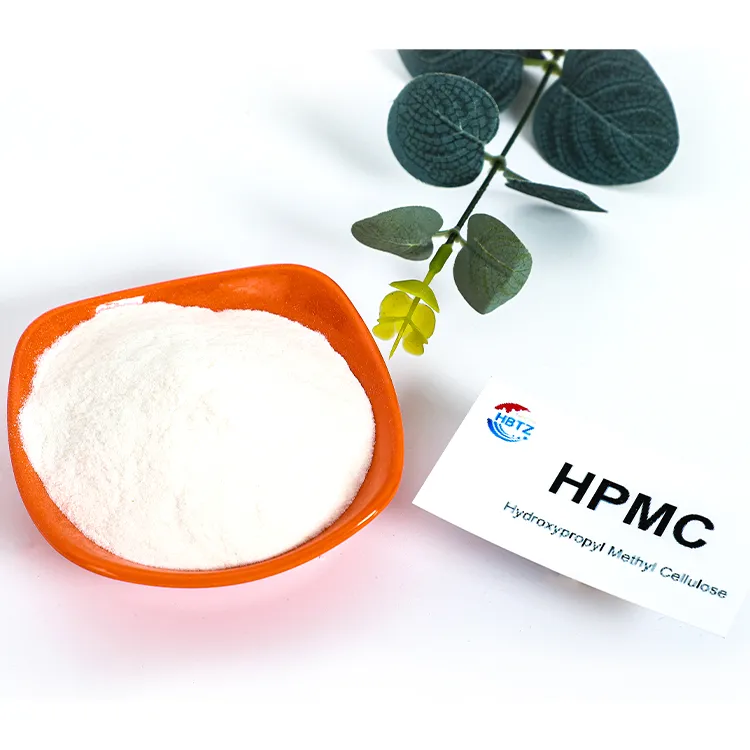
HPMC Suppliers-Hebei Tangzhi Technology|High-Performance Thickener&Stabilizer


Hydroxypropyl Methyl Cellulose (HPMC), with the CAS number 9004-65-3, is a high-performance multifunctional polymer that serves as a thickener and stabilizer across diverse industries. Developed by Hebei Tangzhi Technology Co., Ltd., HPMC exemplifies the intersection of chemical innovation and industrial application. This article explores the technical specifications, advantages, and real-world applications of HPMC, while highlighting the company's commitment to quality and sustainability.
Product Overview
HPMC is a semi-synthetic, non-toxic, and biodegradable cellulose derivative. Its unique molecular structure, formed by the substitution of hydroxyl groups on cellulose with methoxy and hydroxypropyl groups, grants it exceptional solubility in both water and organic solvents. This dual solubility makes HPMC a critical component in formulations requiring viscosity control, film formation, and emulsion stability.
Hebei Tangzhi Technology Co., Ltd., a leading HPMC supplier, has positioned itself as a trusted partner for manufacturers seeking reliable and high-quality cellulose derivatives. The company's expertise in polymer chemistry and its state-of-the-art production facilities ensure that HPMC meets stringent industry standards.
Technical Specifications
| Parameter | Details |
|---|---|
| CAS Number | 9004-65-3 |
| Molecular Structure | Cellulose backbone with methoxy (CH3O-) and hydroxypropyl (CH2CH(OH)CH2O-) substituents |
| Viscosity Range | 100–200,000 mPa·s (depending on grade) |
| Solubility | Water-soluble; slightly soluble in ethanol and methanol |
| Thermal Stability | Stable up to 200°C |
| Particle Size | Typically 80–120 mesh |
| Purity | ≥99% (as per industry standards) |
Key Advantages of HPMC
HPMC's versatility stems from its exceptional properties:
- Viscosity Control: HPMC's ability to adjust fluid viscosity makes it ideal for coatings, adhesives, and pharmaceutical suspensions.
- Stability: It prevents phase separation in emulsions and suspensions, ensuring product longevity.
- Biocompatibility: Its non-toxic nature makes it suitable for food, cosmetic, and medical applications.
- Environmental Friendliness: HPMC is biodegradable, aligning with global sustainability goals.
Applications Across Industries
Construction Industry
In construction, HPMC is a critical additive in cement-based products. It improves workability, reduces water demand, and enhances the adhesion of mortars and plasters. According to the National Institute of Standards and Technology (NIST), "HPMC's role in optimizing concrete mixtures aligns with modern demands for durable and sustainable infrastructure." This is particularly relevant as NIST continues to develop standards for construction materials to ensure safety and efficiency.
Pharmaceuticals
HPMC serves as a binder, disintegrant, and controlled-release agent in drug formulations. Its film-forming properties are essential for tablet coatings, while its solubility aids in the delivery of active pharmaceutical ingredients (APIs). The U.S. Food and Drug Administration (FDA) recognizes HPMC as a safe excipient, further validating its use in medicines.
Food and Beverage
In the food industry, HPMC acts as a thickener, stabilizer, and texture enhancer. It is used in products like sauces, dairy alternatives, and baked goods to maintain consistency and prevent separation. The NIST has emphasized the importance of such additives in ensuring food safety and quality, as outlined in its research on food preservation technologies.
Personal Care and Cosmetics
HPMC's ability to form clear, flexible films makes it a popular ingredient in shampoos, lotions, and hair gels. It provides viscosity and enhances the sensory experience of cosmetic products. As noted by NIST, "the development of multifunctional polymers like HPMC is crucial for advancing the performance of personal care products."
Company Background: Hebei Tangzhi Technology Co., Ltd.
Founded in [year], Hebei Tangzhi Technology Co., Ltd. has established itself as a leader in the production of cellulose derivatives. The company's commitment to innovation is reflected in its advanced manufacturing processes and rigorous quality control systems. As a China HPMC factory, Tangzhi ensures that its products meet international standards, including ISO 9001 and ISO 14001 certifications.
The company's research and development (R&D) team continuously explores new applications for HPMC, collaborating with industry experts to address evolving market needs. This dedication to excellence has earned Tangzhi a reputation for reliability and customer satisfaction.
Why Choose Hebei Tangzhi Technology?
Several factors distinguish Hebei Tangzhi Technology Co., Ltd. from its competitors:
- Quality Assurance: The company employs advanced analytical techniques, such as gel permeation chromatography (GPC), to ensure product consistency.
- Customization: Tangzhi offers tailored solutions to meet specific customer requirements, from viscosity grades to packaging options.
- Global Reach: With a network of distributors worldwide, the company provides efficient supply chain solutions for HPMC buyers across industries.
Environmental and Safety Considerations
HPMC is classified as a non-hazardous material, with no significant toxicological risks when used as directed. The NIST has highlighted the importance of such substances in reducing the environmental footprint of industrial processes. Tangzhi Technology adheres to strict environmental regulations, ensuring that its production methods minimize waste and energy consumption.
Future Prospects
As industries increasingly prioritize sustainability, HPMC's demand is expected to grow. Innovations in green chemistry and biodegradable materials will further solidify its role in the market. Hebei Tangzhi Technology Co., Ltd. is well-positioned to lead this transition, leveraging its expertise to develop next-generation HPMC products.
Conclusion
Hydroxypropyl Methyl Cellulose (HPMC) is a testament to the power of polymer science in addressing modern industrial challenges. From construction to cosmetics, its applications are as diverse as its benefits. Hebei Tangzhi Technology Co., Ltd. continues to drive innovation in this field, offering high-quality HPMC solutions that meet the needs of a rapidly evolving market.
References
National Institute of Standards and Technology (NIST). (n.d.). Driving Innovation. Retrieved from https://www.nist.gov.
Hebei Tangzhi Technology Co., Ltd.. (n.d.). HPMC Product Specifications. Retrieved from https://www.tangzhihpmc.com.
-
Reliable Powdered Cellulose Supplier: Quality, Sustainability & InnovationNewsNov.24,2025
-
Find Trusted Microfibrillated Cellulose Suppliers for Sustainable Industrial SolutionsNewsNov.24,2025
-
Leading Methocel Suppliers: Quality, Innovation & Sustainability in Methylcellulose SupplyNewsNov.23,2025
-
Reliable Hydroxyethylcellulose Suppliers for Industry & Sustainability | Tangzhi HPMCNewsNov.23,2025
-
Top Ethyl Cellulose Supplier – Quality, Sustainability, and Industrial SupportNewsNov.23,2025
-
Trusted CMC Powder Suppliers for Food, Pharma & Industrial Use | Tangzhi HPMCNewsNov.22,2025





















